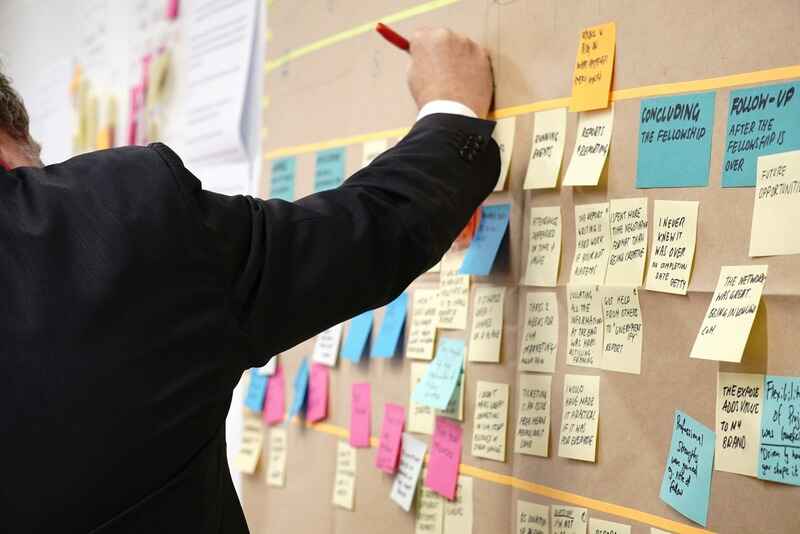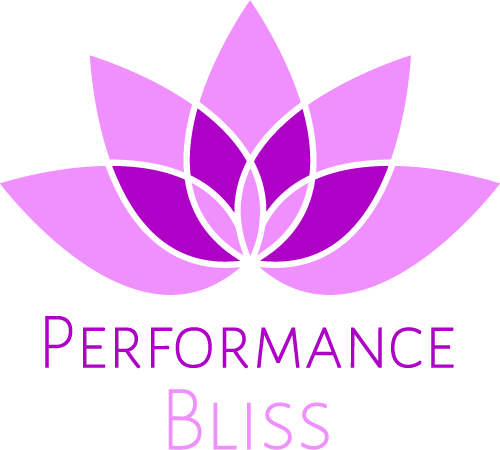Setting and tracking employee goals is one of the most effective ways to drive both individual and organizational performance. Clear, measurable goals provide employees with a roadmap to success, while continuous feedback helps them stay aligned with their objectives and motivated to improve. For managers, the challenge lies in creating meaningful goals and ensuring employees have the support and feedback they need to achieve them.
This is where performance feedback tools come into play. By using these tools, managers can streamline the goal-setting process, track progress in real time, and provide constructive feedback that promotes growth and development. In this comprehensive guide, we’ll explore how to set and track employee goals effectively using performance feedback tools, and how platforms like Performance Bliss can support this process.
The Importance of Setting Clear Employee Goals
Before diving into how to use performance feedback tools, it’s important to understand why employee goals are essential for any team or organization. Goals provide direction and purpose. Without clear objectives, employees can struggle to understand how their efforts contribute to the bigger picture, which can lead to disengagement or decreased productivity.
Clear, well-defined goals help employees prioritize their tasks, stay focused on what matters most, and feel more accountable for their work. For managers, setting goals offers a structured way to evaluate performance and guide development. It’s not just about tracking whether employees meet expectations, but also about helping them grow their skills and advance in their careers.
How to Set SMART Employee Goals
The first step in creating effective employee goals is ensuring they are SMART: Specific, Measurable, Achievable, Relevant, and Time-bound. This framework helps create clear, actionable goals that employees can realistically achieve while also providing a way to track progress.
- Specific: Goals should be clearly defined, leaving no room for ambiguity. Instead of saying, “Improve communication skills,” set a goal like, “Deliver three presentations to the team this quarter.”
- Measurable: Every goal should have a measurable outcome to determine success. For example, if the goal is to increase sales, specify a percentage or number: “Increase sales by 15% over the next six months.”
- Achievable: Goals should be challenging yet realistic. They should stretch the employee’s abilities but remain attainable with effort.
- Relevant: Goals need to align with both the employee’s role and the organization’s objectives. For example, improving client relations would be more relevant to a customer service employee than a software developer.
- Time-bound: Goals should have a clear deadline or time frame for completion, ensuring employees stay focused on achieving their targets within a specific period.
Performance Bliss helps managers create and manage SMART goals by providing customizable templates that guide both the goal-setting process and performance tracking. With these tools, goals can be aligned with organizational priorities, making them more relevant and measurable.
Using Performance Feedback Tools to Track Employee Goals
Once goals are set, tracking progress is essential for ensuring success. Performance feedback tools play a critical role in this process by providing managers with real-time insights into how employees are performing relative to their goals. Here’s how these tools help track progress effectively:
- Real-Time Tracking: Performance feedback tools allow managers to monitor progress in real time. Whether the goal is tied to project deadlines, sales targets, or skill development, these tools offer dashboards that show how far an employee has come and what remains to be done.
- Data-Driven Insights: With feedback tools, tracking is no longer based solely on subjective opinions. Managers can rely on performance metrics, task completion rates, and other quantitative data to evaluate progress. This ensures that feedback is grounded in reality, making it more meaningful for employees.
- Progress Updates: Performance feedback tools enable regular check-ins and updates. This can take the form of automated reminders or scheduled reviews, ensuring that both managers and employees are consistently reviewing progress. These regular updates help keep goals top of mind, reducing the risk of them being forgotten or deprioritized.
- Goal Adjustments: Goals are not set in stone. If circumstances change—such as a shift in company priorities or the discovery of unforeseen challenges—feedback tools make it easy to adjust goals as needed. This flexibility allows for more dynamic and realistic goal management.
Performance Bliss integrates these tracking features, making it simple for managers to monitor employee progress, identify areas where support is needed, and celebrate milestones along the way.
How Feedback During Reviews Supports Goal Achievement
Feedback plays a crucial role in helping employees stay on track with their goals and improving their performance along the way. Performance reviews are an ideal opportunity to provide detailed feedback that can motivate and guide employees toward success. Here’s how feedback during reviews can support employee goals:
- Recognizing Achievements: Celebrating wins—whether big or small—is essential for maintaining motivation. During performance reviews, managers should take the time to acknowledge what the employee has done well, such as hitting milestones or demonstrating consistent improvement. Positive reinforcement encourages employees to keep working toward their goals with enthusiasm.
- Addressing Challenges: Constructive feedback is just as important as positive recognition. If employees are struggling to meet their goals, performance reviews are a great time to identify specific challenges and offer solutions. This feedback should be focused on improvement and framed in a way that empowers employees to overcome obstacles.
- Actionable Steps: Employees need clear, actionable steps to help them achieve their goals. Feedback should include specific recommendations on how to improve performance, whether that means additional training, seeking mentorship, or adopting new strategies. Providing a clear path forward helps employees understand how to bridge the gap between current performance and their goals.
- Aligning Feedback with Goals: Performance reviews should not just focus on the past but also look ahead. Align feedback with future goals by discussing the employee’s next steps and how their current performance sets them up for continued success. This forward-thinking approach keeps employees focused on personal and professional growth.
By leveraging tools like Performance Bliss, managers can document feedback throughout the year, ensuring that performance reviews are more comprehensive and relevant. These tools also allow for a seamless integration between goal tracking and feedback, making the review process more impactful.
The Role of Continuous Feedback in Achieving Employee Goals
While performance reviews are an important touchpoint for feedback, they should not be the only time employees hear from their managers. Continuous feedback—provided regularly throughout the year—is key to keeping employees engaged, motivated, and aligned with their goals. Here’s why continuous feedback is so valuable:
- Immediate Course Correction: With regular feedback, employees can make adjustments to their approach before small issues turn into major problems. If an employee is veering off track or facing challenges, continuous feedback gives them the opportunity to course-correct in real time, increasing the likelihood of achieving their goals.
- Building Confidence: Frequent positive reinforcement helps build confidence. When employees are recognized for their efforts and progress, it boosts morale and keeps them motivated to continue working toward their goals.
- Ongoing Development: Continuous feedback fosters a culture of development rather than evaluation. Instead of simply waiting for a review to point out weaknesses, managers can provide ongoing support that helps employees grow gradually over time. This not only improves performance but also enhances job satisfaction and engagement.
Aligning Efforts with Changing Priorities: In dynamic workplaces, priorities can shift. Continuous feedback ensures that employees are always aligned with current goals and objectives, even as these evolve. It allows for more agile goal management and ensures that employees’ efforts are always directed toward the most important outcomes.
Performance Bliss enables managers to deliver continuous feedback through automated reminders and real-time performance tracking. By integrating these tools, managers can ensure that feedback is not just a one-time event but a consistent part of the employee development process.
How to Leverage Performance Feedback Tools for Long-Term Success
In addition to setting and tracking employee goals, performance feedback tools also support long-term career development. By documenting goals, tracking progress, and delivering regular feedback, managers can help employees build a clear path for career advancement. Here’s how to leverage these tools for long-term success:
- Career Development Plans: Performance feedback tools allow managers and employees to collaborate on personalized career development plans. These plans outline not just short-term goals but also long-term objectives, helping employees see a clear path forward in their career.
- Identifying Skill Gaps: Feedback tools can help managers identify skill gaps that need to be addressed for employees to achieve their long-term goals. Whether it’s improving leadership skills or gaining technical expertise, feedback tools provide the data needed to create targeted development plans.
- Tracking Progress Over Time: With performance feedback tools, managers can track employee progress over months or even years. This long-term view helps identify trends in performance, ensuring that employees are continuously improving and moving toward their larger career goals.
- Recognizing Growth: One of the most motivating factors for employees is knowing that their efforts are recognized. By using performance feedback tools, managers can easily track and celebrate long-term growth, reinforcing positive behaviors and encouraging continued development.
Performance Bliss offers features that support both short-term goal tracking and long-term career development, making it a valuable tool for managers looking to help their teams achieve lasting success.
Conclusion: Setting and Tracking Employee Goals with Performance Feedback Tools
Setting and tracking employee goals is a fundamental part of managing a successful team. By using performance feedback tools, managers can ensure that goals are SMART, track progress in real time, and provide ongoing feedback that motivates employees to reach their full potential.
Performance Bliss is a comprehensive platform designed to help managers and employees collaborate on goal-setting, track performance, and deliver continuous feedback, all in one place. By integrating tools like these into your management process, you can foster a culture of development, accountability, and success.
Ultimately, helping employees set and achieve their goals is about more than just improving performance—it’s about supporting their growth and creating a more engaged, motivated workforce.
✅ Explore In-Depth: The Ultimate Guide to Developer Performance Reviews


